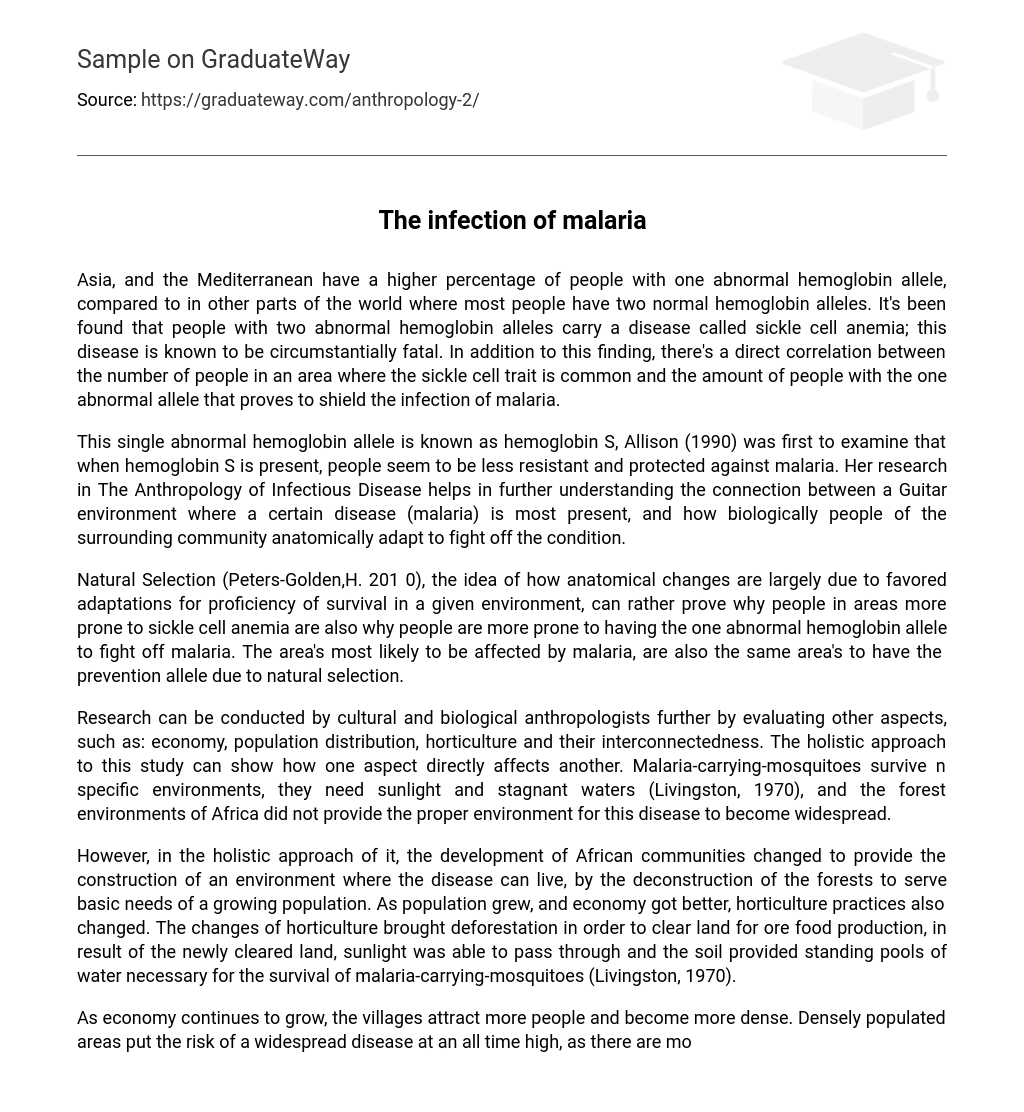In some regions, such as Asia and the Mediterranean, there is a higher prevalence of individuals with one abnormal hemoglobin allele compared to other parts of the world where most people have two normal hemoglobin alleles. Studies have shown that those who have two abnormal hemoglobin alleles experience sickle cell anemia, a potentially deadly condition. Additionally, there is a strong link between the occurrence of the sickle cell trait in a population and the number of individuals carrying one abnormal allele that provides protection against malaria infection.
According to Allison (1990), the presence of a single abnormal allele known as hemoglobin S reduces resistance and protection against malaria. Her research in The Anthropology of Infectious Disease sheds light on the relationship between the prevalence of malaria in a particular geographic area and the biological adaptations of the local population to combat this disease.
Natural selection, as explained by Peters-Golden in 2010, suggests that anatomical changes are primarily a result of favorable adaptations for survival in a specific environment. This theory can explain why individuals in regions with a higher risk of sickle cell anemia are also more likely to carry the abnormal hemoglobin allele that helps combat malaria. These regions, which are most susceptible to malaria, have also developed the prevention allele through natural selection.
Both cultural and biological anthropologists can conduct research by evaluating various aspects such as economy, population distribution, horticulture, and their interconnectedness. By taking a holistic approach, this study can demonstrate the direct impact of one aspect on another. For example, mosquitoes that carry malaria can only survive in specific environments that have sunlight and stagnant waters (Livingston, 1970). Consequently, the forest environments in Africa did not offer the necessary conditions for this disease to become widespread.
The holistic approach to the development of African communities has caused changes that have facilitated the thriving of the disease. These changes involve clearing forests for meeting the basic needs of a growing population. With improvements in population and economy, horticulture practices have advanced. Consequently, deforestation has occurred to make room for increased food production. This deforestation allows sunlight to reach the cleared land, resulting in standing pools of water that are vital for malaria-carrying mosquitoes’ survival (Livingston, 1970).
As the economy grows, villages become more densely populated, increasing the risk of widespread disease. The Anthropology of Infectious Disease discusses various adaptations and risks of malaria, including Ellison’s approach to Hemoglobin S (1990) and Westfield’s research on over 60 African communities. Westfield found that communities heavily reliant on an agricultural environment with deforestation were most susceptible to malaria. However, a recent study has shown that the Duffy blood group negative genotype provides resistance to malaria and is predominantly found in African and African-American individuals in the United States (Katz & Shall, 1990).
This research demonstrates how the resistance to malaria has been inherited from ancestors who were culturally and biologically proven to have adapted to malaria in their local environment. The research supports the idea of holistic research, showing how various aspects of society and natural selection work together to combat and adapt to wide-spread diseases like malaria. Evidence has shown that an increase in agricultural demand caused by population growth and economic development increases the vulnerability of an area to malaria due to the compromises that must be made to provide for a community through interdependencies.





